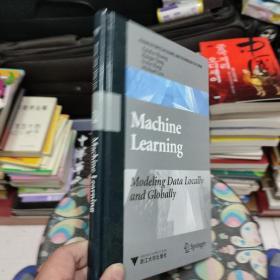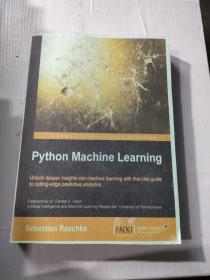
Machine Learning in Remote Sensing Image Analysis
正版保障 假一赔十 可开发票
¥ 98.54 5.0折 ¥ 198 全新
库存78件
作者张天翔[等]著
出版社冶金工业出版社
ISBN9787502494384
出版时间2023-04
装帧平装
开本其他
定价198元
货号12980989
上书时间2024-12-23
- 最新上架
商品详情
- 品相描述:全新
- 商品描述
-
目录
1Blind Image Deblurring with Joint Extreme Channels and L0-Regularized Intensityand Gradient Priors 1.1introduction 1 1.2Proposed Model and Optimization Algorithm 2 1.3Experimental Results 5 1.4Conclusion 6 2Non-Blind Deconvolution with l1-Norm of High-Frequency Fidelity 2.1Introduction 7 2.2Proposed Method 9 2.2.1Overall Objective Function 9 2.2.2L1-Norm Fidelity of High-Frequency Images 9 2.2.3Numerical Solution 12 2.3Experiment Validation 13 2.3.1Extended Levin and Google Image Dataset Comparison 15 2.3.2Motion Blur Comparison 17 2.3.3Performance Comparison with Noise Effect 18 2.3.4High-Frequency Importance Validation 20 2.4Conclusion and Discussion 21 3A Novel Framework Method for Non-Blind Deconvolution Using Subspace ImagesPriors 3.1Introduction 23 3.2Previous Work of Priors Regularization 25 3.3The Motivation and Design of the Proposed Framework 26 3.3.1Motivation 26 3.3.2The Proposed Framework 29 3.4Experiment Validation 32 3.4.1Extended Levin and Google Image Dataset Comparison 34 3.4.2General Blurs Comparison 36 3.4.3Deblurring Performancewith Noise 37 3.4.4Comparison of Different Subspaces Decomposition 38 3.4.5Comparison of Different Integration Methods 39 3.5Conclusion and Discussion 40 4MRI Reconstruction with an Edge-Preserving Filtering Prior 4.1Introduction 41 4.2A MRI Reconstruction Algorithm With an Edge-Preserving FilteringPrior 43 4.2.1Model Construction 43 4.2.2Numerical Solution 46 4.3Experimental Results 48 4.3.1Experiments on Real-Valued MRI 50 4.3.2Experiments on Complex-Valued MRI 50 4.3.3Performance with Noise 52 4.3.4Edge-Preserving Filtering Validation 53 4.3.5Parameter Evaluation 54 4.3.6Computational Time 56 4.3.7Extensive Experiments on CT Reconstruction 56 4.4Conclusion 57 5Compressed Sensing MRI with Joint Image-Level and Patch-Level Priors 5.1Introduction 59 5.2MRI Reconstruction With Joint Image-Level and Patch-Level Priors 60 5.2.1Model Construction 60 5.2.2Optimization Algorithm 61 5.3Experimental Results 64 5.4Conclusion 65 6Mixed Noise Removal Based on A Novel Non-parametric Bayesian Sparse OutlierModel 6.1Introduction 67 6.2Novel Model Construction 69 6.3Model Inference 71 6.4Experimental Validation 73 6.5Conclusion and Discussion 77 7DewaterNet: A Fusion Adversarial Real Underwater Image Enhancement Network 7.1introduction 79 7.1.1Related Work 80 7.1.2Non model-based methods 80 7.1.3Model-based methods 81 7.1.4Deep learning-based methods 81 7.1.5Discussion 82 7.2Methodology 83 7.2.1Network architecture 83 7.2.2GAN objective function 84 7.3Experiments 85 7.3.1Setup 85 7.3.2Subjective assessment 87 7.3.3Objective assessment 90 7.3.4Ablation study 92 7.4Conclusion 94 8Underwater Image Enhancement Using a Multi-Scale Dense Generative AdversarialNetwork 8.1Introduction 95 8.2Related Work 96 8.3Methodology 98 8.3.1Generator Network 98 8.3.2Discriminator Network 100 8.3.3GAN objective function 101 8.4Experiments 101 8.4.1Setup 102 8.4.2Real-world underwater enhancement 103 8.4.3Synthetic underwater enhancement 104 8.4.4Ablation study and application tests 105 8.5Conclusion 106 9Compressed Sensing MRI via a Multi-scale Dilated Residual Convolution Network 9.1Introduction 109 9.2Related Work 111 9.2.1Residual learning 111 9.2.2Dilated convolution 111 9.2.3Concatenation 112 9.3Related Work 112 9.3.1Problem Formulation 112 9.3.2Proposed Block 112 9.3.3Network Architecture 115 9.4Experiment Results 115 9.4.1Experiments on Real-valued MRI With Different Masks 118 9.4.2Experiments on Complex-valued MRI With Different Masks 118 9.4.3Ablation Study 119 9.4.4Experiments in The Noisy Setting 121 9.4.5Discussions on Dilated Convolutions, The Number of Blocks andParameters. 122 9.4.6Experiments on Super-resolution 123 9.5Conclusion and Prospect 123 10Attention Guided Global Enhancement and Local Refinement Network for SemanticSegmentation 10.1Introduction 125 10.2Related Work 127 10.2.1Encoder-Decoder Models 127 10.2.2Global Context 127 10.2.3Local Context 128 10.2.4Relation Modeling andAttention Mechanism 128 10.3Proposed Approach 129 10.3.1Global Enhancement for Decoder Features 129 10.3.2Local Refinement for Encoder Features 131 10.3.3Context Fusion Block 133 10.3.4Overall Architecture 133 10.4Experiments and Results 134 10.4.1Experimental Settings 134 10.4.2Comparison With State-of-the-Arts 135 10.4.3Ablation Studies 136 10.4.4AGLN-Lite 141 10.4.5Understanding AGLN 142 10.5Conclusion 143 11 Land cover classification method by SVM and Sentinel–2 Satellite Imagery 11.1 Materials and problem 148 11.1.1Data sources 148 11.1.2Problems formulation 148 11.2Methodology 149 11.2.1Overall procedure 149 11.2.2Pre-process procedure 150 11.2.3Groundtruth labelling 150 11.2.4Feature selection 151 11.2.5Classifier selection: SVMs 153 11.3Classification results 155 11.3.1Index based approach 155 11.3.2Index related bands approach 155 11.3.3MI selected bands approach 156 11.3.4Full bands approach 156 11.3.5 Further discussions 156 11.4 Conclusions 157 12Optimized Random Forest: A Hyperparameter Tuning Method in Machine LearningAlgorithms 12.1Introduction 165 12.2Related Work 166 12.2.1Machine learning classifier 167 12.2.2Deep learning classifier 167 12.3Materials 167 12.3.1Sentinel-2 satellite imagery 167 12.3.2Study area 168 12.4Methodology 169 12.4.1Problems formulation 169 12.4.2Land cover classification framework 170 12.4.3Classification performance evaluation 172 12.5Results 174 12.5.1RGB band features 174 12.5.2Full multispectral band features 176 12.6Discussion 179 12.7Conclusions and Future Work 180 13Dense Semantic Labeling with Atrous Spatial Pyramid Pooling and Decoder forHigh-Resolution Remote Sensing Imagery 13.1Introduction 187 13.2Methods 190 13.2.1Encoder with ResNet and Atrous Spatial Pyramid Pooling 190 13.2.2Decoder and the Multi-scale Loss Function 191 13.2.3Dense Conditional Random Fields Based on Superpixel 194 13.3Results 194 13.3.1Datasets 194 13.3.2Preprocessing the Datasets 195 13.3.3Training Protocol and Metrics 196 13.3.4Experimental Results 196 13.4Evaluation and Discussion 199 13.4.1The Importance of Multi-scale Loss Function 199 13.4.2Comparison to DeepLab v3+ and Other the State-of-art Networks 200 13.4.3The Influence of Superpixel-based DenseCRF 202 13.5Conclusions 204 14HRCNet: High-Resolution Context Extraction Network for Semantic Segmentation ofRemote Sensing Images 14.1Introduction 205 14.2Related Work 207 14.2.1Remote Sensing Applications 207 14.2.2Model Design 207 14.3Methods 209 14.3.1The Basic HRNet 209 14.3.2Framework of theproposed HRCNet 210 14.3.3Light-Weight High-ResolutionNetwork (Light HRNet) 210 14.3.4Feature Enhancement Feature Pyramid (FEFP) Module 213 14.3.5Multi-level Loss Function 213 14.4Experiment 216 14.4.1Datasets 216 14.4.2Experiment Settings and Evaluation Metrics 217 14.4.3Training Data and Testing Data Preparation 218 14.4.4Experimental Results 219 14.5Discussion 226 14.5.1Ablation Experiments 226 14.5.2Improvements and Limitations. 228 14.6Conclusions 228 15Efficient Transformer for Remote Sensing Image Segmentation 15.1Introduction 231 15.2Related Work 233 15.3Methods 234 15.3.1Investigation of Basic Swin transformer backbone and uperhead 235 15.3.2Efficient architecture design 237 15.3.3Edge processing 239 15.4Experimental Results 242 15.4.1Datasets and experimental settings 242 15.4.2Study for Swin transformer 243 15.4.3Efficient transformer backbone and mlphead 247 15.4.4Edge processing methods 248 15.4.5Comparison to SOTA methods 249 15.5Discussion 252 15.6Conclusion 254 16Hyper-LGNet: Coupling Local and Global Feature for Hyperspectral ImageClassification 16.1Introduction 255 16.2Methodology 258 16.2.1Overview of conventional CNN and Transformer network 258 16.2.2Hyper-LGNet network architecture 259 16.2.3Experimental Settings 262 16.3Experiments and results 263 16.3.1Dataset introduction and division 263 16.3.2Classification results by the proposed method on threemainstream datasets266 16.3.3Ablation studies 271 16.4Conclusions and future work 274 17Hyper-ES2T: Efficient Spatial-Spectral Transformer for the Classification ofHyperspectral Remote Sensing Images 17.1Introduction 275 17.2Methodology 279 17.2.1A Brief Review of Transformer 279 17.2.2Efficient Spatial-Spectral Transformer Design 280 17.2.3Aggregated Feature Enhancement Module 283 17.2.4Discussion 284 17.3Experimental Results 285 17.3.1Experimental Datasets 285 17.3.2Experimental Settings and Evaluation Metrics 287 17.3.3Comparison with Previous SOTA Methods 287 17.3.4Ablation Study for Network Architecture 294 17.4Conclusion and Future Works 298 18CCTNet: Coupling CNN and Transformer Networks for Crop Segmentation of Remote sensing images 18.1Introduction 299 18.2Related Work 301 18.3Methods 303 18.3.1The CNN Based ResNet 303 18.3.2Basic CSwin Transformer 304 18.3.3Framework of theProposed CCTNet 305 18.3.4Two Designs for CNN and Transformer Fusion Module 306 18.3.5Loss Functions Design 308 18.4Experimental Results 309 18.4.1Dataset and Experimental Settings 309 18.4.2Methods Comparison on Barley Remote Sensing Dataset 312 18.4.3Study for the CNN and Transformer Fusion modules 313 18.4.4Ablation Experiments of the Auxiliary Loss Function 315 18.4.5Results of Different CNN and Transformer Model Sizes 315 18.4.6Study for the Improvements of Each Category 316 18.5Discussion 317 18.6Conclusion 318 19Ir-UNet: Irregular Segmentation U-Shape Network for wheat yellow rust detectionby UAV multispectral imagery 19.1Introduction 321 19.2Field experiment 323 19.2.1Experiment design 323 19.2.2UAV multispectral imaging system 324 19.2.3Data pre-processing and labelling 326 19.3Methodology 327 19.3.1Basic UNet network 328 19.3.2Proposed Ir-UNet network 328 19.3.3Performance metrics 331 19.3.4Ir-UNet algorithm settings 331 19.4Experimental results 332 19.4.1Data augmentation results 332 19.4.2Ablation studies 333 19.4.3Ir-UNet with various inputs 334 19.4.4Optimized band weight results 336 19.5Discussions 338 19.6Conclusions and future work 341 20Efficient DF-UNet: Dual-Flow
相关推荐
-

Machine Learning
八五品怀化
¥ 200.00
-

Machine Learning
九品北京
¥ 100.00
-

Machine Learning
九品北京
¥ 100.00
-

Machine Learning
九品上海
¥ 888.00
-

Machine Learning
九品北京
¥ 490.00
-

Reliable machine learning
全新武汉
¥ 64.51
-

Reliable machine learning
全新武汉
¥ 64.51
-

Reliable machine learning
全新武汉
¥ 68.63
-

Reliable machine learning
全新北京
¥ 66.72
-

python Machine Learning
九五品南充
¥ 64.00
— 没有更多了 —












以下为对购买帮助不大的评价